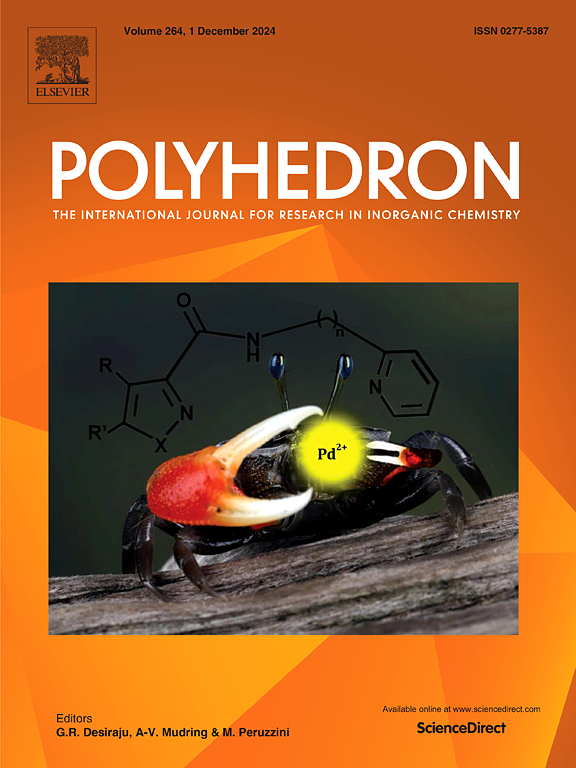Structural characterization and comparative analysis of two crystalline forms of drug cocrystal (S086) by MicroED, XPS, and XAFS
IF 2.4
3区 化学
Q2 CHEMISTRY, INORGANIC & NUCLEAR
引用次数: 0
Abstract
Similar to the world’s first marketed ARNI drug sacubitril/valsartan (LCZ696), S086 is also a drug-drug cocrystal formed by neprilysin inhibitor (NEP) and angiotensin receptor blocker (ARB). ARNI drugs have played an important role in treating hypertension as a new class of antihypertensive drugs. Therefore, understanding the solid-state structure of S086 has become very meaningful. Employing advanced analytical techniques such as MicroED, XPS and XAFS, our comprehensive analysis has elucidated that the two crystalline forms, α and ξ of S086, are cocrystals derived from the synergistic combination of EXP3174, sacubitril, and calcium atoms, mediated by strong interactions. Due to the difficulty in obtaining X-ray single crystal structures, XPS and XAFS analyses, which offer unique insights into material structure, reasonably suggest that the two crystal forms of S086 possess highly similar coordination structures centered around calcium atoms with mixed ligands, but there are still subtle differences. The subtle differences in carboxylate coordination modes between α and ξ are reflected in the recently published linear and nonlinear IR spectroscopic studies of S086.

用MicroED、XPS和XAFS对药物共晶(S086)两种晶型进行结构表征和比较分析
与全球首个上市的ARNI药物sacubitril/valsartan (LCZ696)类似,S086也是由neprilysin抑制剂(NEP)和血管紧张素受体阻滞剂(ARB)形成的药物-药物共晶。ARNI药物作为一类新型降压药,在治疗高血压方面发挥了重要作用。因此,了解S086的固态结构就变得非常有意义。利用MicroED、XPS和XAFS等先进的分析技术,我们的综合分析表明,S086的α和ξ两种晶型是由EXP3174、sacubitril和钙原子在强相互作用下协同结合而成的共晶。由于难以获得x射线单晶结构,XPS和XAFS分析为材料结构提供了独特的见解,合理地表明S086的两种晶体形式具有高度相似的配位结构,以混合配体的钙原子为中心,但仍然存在细微的差异。α和ξ之间羧酸配位模式的细微差异反映在最近发表的S086的线性和非线性红外光谱研究中。
本文章由计算机程序翻译,如有差异,请以英文原文为准。
求助全文
约1分钟内获得全文
求助全文
来源期刊

Polyhedron
化学-晶体学
CiteScore
4.90
自引率
7.70%
发文量
515
审稿时长
2 months
期刊介绍:
Polyhedron publishes original, fundamental, experimental and theoretical work of the highest quality in all the major areas of inorganic chemistry. This includes synthetic chemistry, coordination chemistry, organometallic chemistry, bioinorganic chemistry, and solid-state and materials chemistry.
Papers should be significant pieces of work, and all new compounds must be appropriately characterized. The inclusion of single-crystal X-ray structural data is strongly encouraged, but papers reporting only the X-ray structure determination of a single compound will usually not be considered. Papers on solid-state or materials chemistry will be expected to have a significant molecular chemistry component (such as the synthesis and characterization of the molecular precursors and/or a systematic study of the use of different precursors or reaction conditions) or demonstrate a cutting-edge application (for example inorganic materials for energy applications). Papers dealing only with stability constants are not considered.
 求助内容:
求助内容: 应助结果提醒方式:
应助结果提醒方式:


